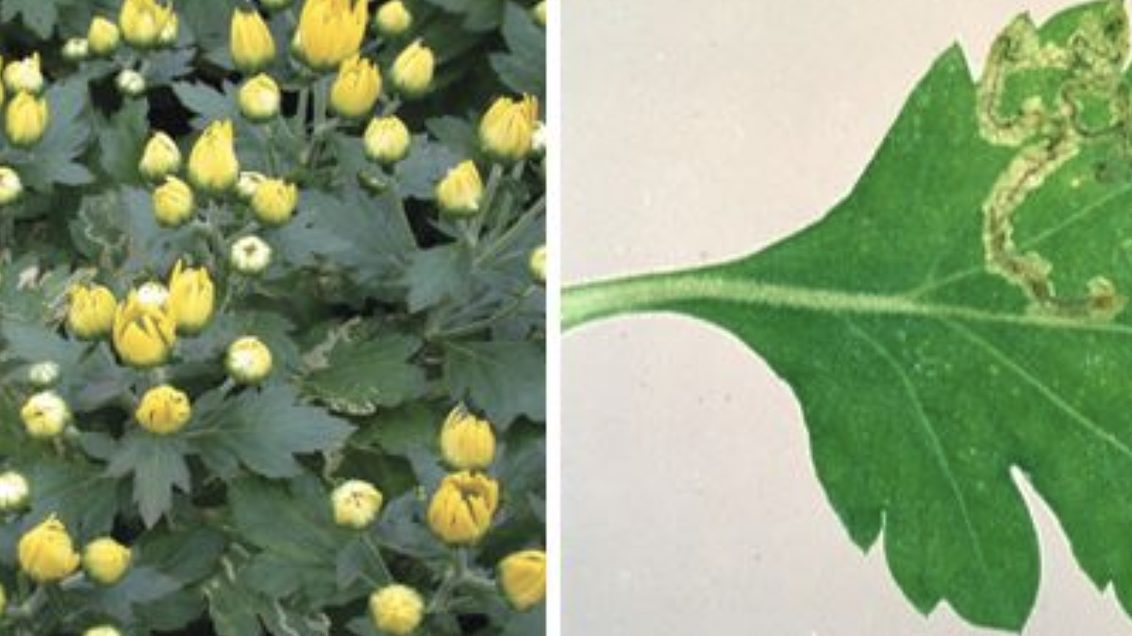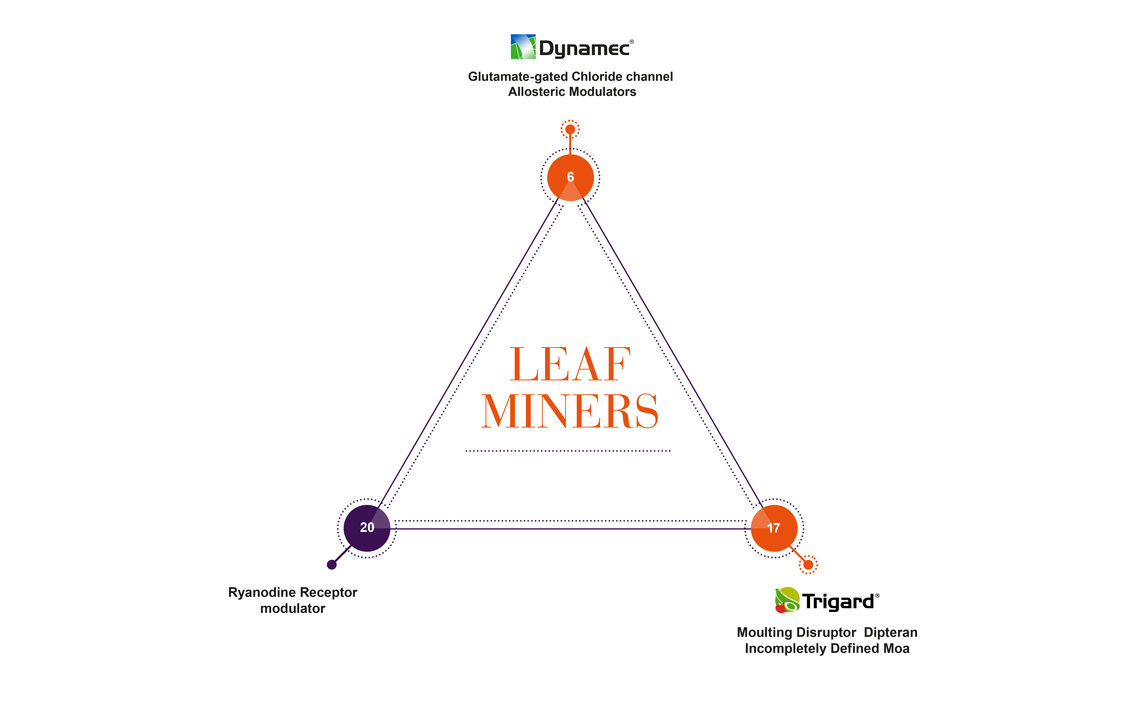Go ahead of Leafminers in your crop this season
The larvae of certain lepidopterous or hymenopterous insects can cause leaf mines by feeding on the mesophyll tissue middle layer of the leaf. However, the main damage caused by leaf miners are in the Agromyzidae family in the Diptera order (true flies). The most common agromyzid leaf miners of commercial significance are in the genus, Liriomyza and Phytomyza.
Liriomyza trifolii – American serpentine leafminer
Liriomyza huidobrensis – South American leafminer
Liriomyza sativae – Vegetable leafminer
Phytomyza syngenesiae – Chrysanthemum leafminer
Biology of the pests
Adult leaf miners are small (1.8 mm), yellow and black flies that are about the same size and shape as fruit flies. In contrast to shore flies, leaf miner adults are brightly colored and have clear wings. Females insert their eggs within leaves and puncture the leaf surface with the ovipositor to feed on damaged plant tissue. Larvae have three instars, forming larger mines inside the leaves as they grow. Liriomyza trifolii mines are readily observed from the top of the leaf, while Liriomyza huidobrensis mines may only be visible from the underside of the leaf. Liriomyza huidobrensis mines tend to follow the veining pattern of the leaf. after completing their feeding, larvae drop from leaves to pupate in the soil. Liriomyza trifolii can complete one generation in 14 days at 35°C and 64 days at 15°C.
Damage
When populations are high, stippling, caused by females puncturing the leaves with their ovipositor to feed and lay eggs, can be serious. However, most of the damage is caused by the larval mines that detract from the aesthetic value of the crop. Excessive feeding by larvae can reduce the plant’s ability to photosynthesise and, if present in high numbers, leafminers can kill the plant. The threshold for damage will depend on the plant. Ornamentals may not be able to tolerate any leaf damage for aesthetic reasons.
Damages of Liriomyza trifolii on chrysanthemums

Leaf miner life cycle
Leaf miners overwinter, or bridge the gap between crops, as pupae in the soil. The adults, which emerge from these pupae, are small flies about 1.5 mm long. Female flies probe leaves of suitable host plants to feed themselves or to lay eggs. Round feeding marks are early indications of leaf miner activity. An excessive nitrogen level in leaves encourages egg laying. The optimum relative humidity for egg laying is between 80-90 percent. Larvae, hatching from these eggs and tunnel their way through the leaf, producing a characteristic leaf mine. The shape of the mine can sometimes distinguish the species of leaf miner, but this cannot be relied upon for identification, which requires microscopic examination of the pest.
The larvae generally exeunt the leaf to pupate, either on the leaf surface or in the top 5 cm of the soil. Larvae may also pupate in the folds of plastic lining the ground in glasshouse production.
The speed of development is affected by temperature. At 12 °C it takes almost 80 days to complete development from egg to adult, whereas at 27 °C, it takes less than 15 days to reach adulthood. It is therefore important to establish biological controls before these temperatures are reached, to avoid plant damage – which could be very serious within 2-3 days, depending on pest levels.

Challenges in controlling leaf miners
Since leafminers have several generations per season, numbers can reach devastating proportions if not controlled. When temperatures are high, the generation time for each life cycle is short. This has lead to the use of chemical programmes that require routine applications of agrochemicals. Unfortunately, over-reliance on chemicals will lead to resistance, which puts further selection pressure on the remaining, narrower range of agrochemicals.
The effective life of any chemical is limited by the frequency of sprays. An IPM strategy combines, physical, cultural, biological and chemical controls, thereby reducing the selection pressure for resistance to chemicals and lengthening their potential
usefulness to growers.
Management
Biological control
Biological control normally keeps these species in check in outdoor situations. outbreaks of leaf miners frequently occur following the disruption of their parasites with broad-spectrum insecticides. for this reason, try to use selective insecticides through the entire production cycle so that parasites can be conserved. The parasites Diglyphus spp. and Dacnusa sibirica are recommended in control leaf miners and may be useful in greenhouse situations, especially if greenhouses are screened to exclude adult leaf miners movement into greenhouses.
Cultural control
Because leaf miners feed on a large variety of plant species, keep production areas free of weeds, which can serve as reservoirs for leaf miner populations. Leaf miners breed in weed or crop hosts outside of greenhouses, so weed management outside the greenhouse and exclusion of immigrating adults are especially valuable as management practices. Effective screens require a pore width of 600 microns or smaller. Carefully inspect plants being brought in to start a new crop to ensure that they are free of mines; discard infested plants or leaves. Steam planting beds immediately after removing infested plantings to eliminate leaf miner pupae in the soil.
Chemical Control
Use selected materials registered for use on greenhouse or nursery ornamentals. Read and follow the instructions on the label before using any pesticide. Before using a pesticide for the first time or on a new crop or cultivar, treat a few plants and check for phytotoxicity. Also consider pesticide resistance management and environmental impact. At least monthly, rotate insecticides with various modes of action to manage resistance and do not apply the same insecticide to successive generations.
Chemical control recommendations; Abamectin (Dynamec) and Cyromazine (Trigard)

